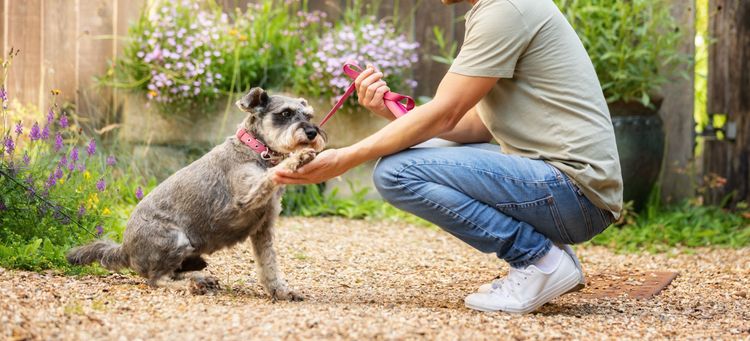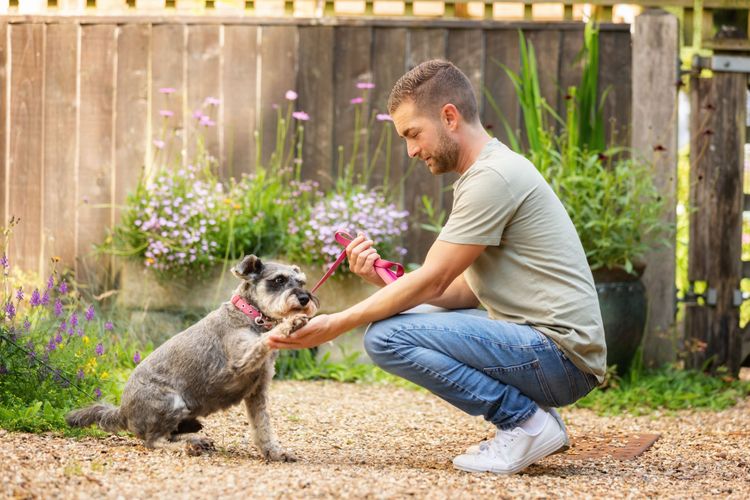
Tricks of the trade: Easy dog training tips from dog behaviourist, Dogtor Adem
5 minute read
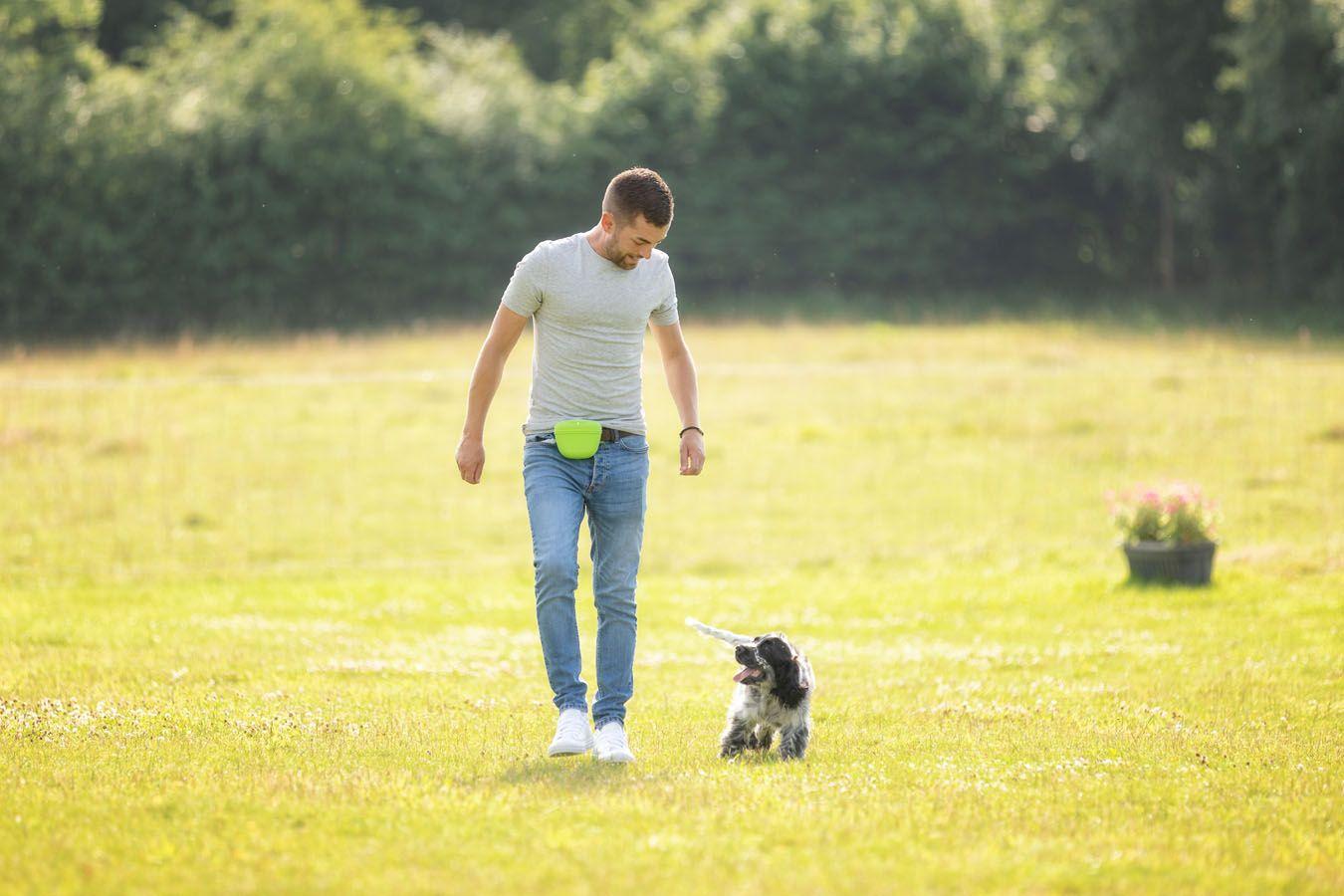
Teach commands positively
Before attempting any training, it's important to find a positive reinforcer that your dog values – this could be a tasty treat they enjoy or a favourite toy. You’ll need this to reward them and reinforce the behaviours you desire.
Teach commands clearly
Alongside your positive reinforcer, you also need to learn something yourself – how to teach commands clearly. Without your clear direction, your dog will struggle to understand and learn what you are asking of them.
One key point is to only say a command word when your dog is doing the action. For example, if you want to teach your dog to sit, you would guide your dog into the sit position with a tasty treat or favourite toy and say ‘sit’ as their bottom hits the ground and they assume the correct position. Do not be tempted to say ‘sit, sit, sit’ repeatedly as you work with them – this will only serve to confuse your dog on the meaning of this word. By saying sit as they do so, your dog can start to link their sitting action with the word and learn what you are asking of them.
Another key point is to positively reward your dog immediately, or within a few seconds, of your dog completing the action or desired behaviour. For teaching ‘sit’, you would offer your dog the treat or toy as their bottom sits on the ground and as you say the word. Timing is most definitely key here.
These same principles should be applied to any commands or behaviours you hope to teach your dog.
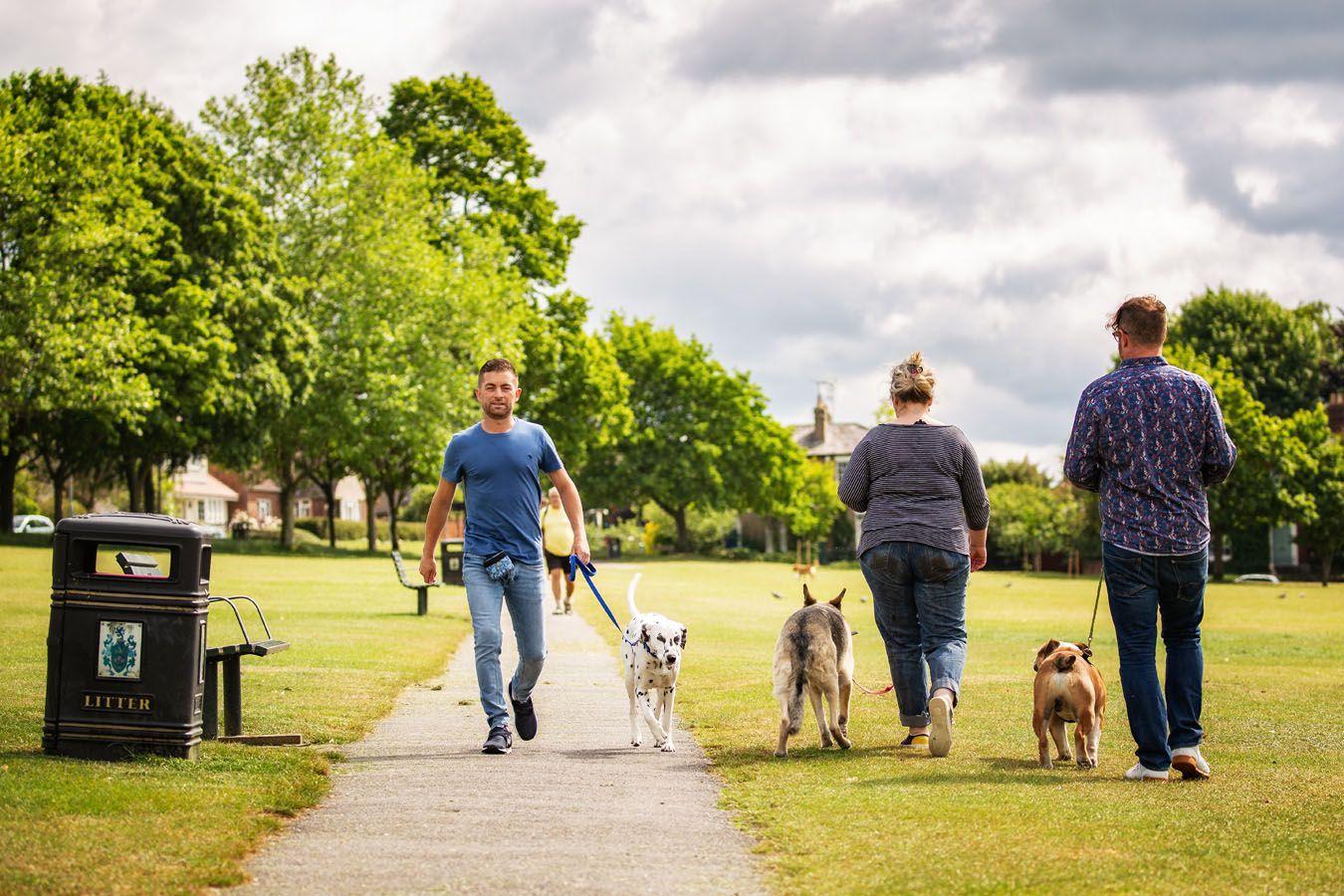
Make training useful and fun
Training your dog can take time, so you should make it fun and make it count! Train for what benefits you and your dog. If tricks are something you both enjoy learning, then that’s great, but equally, you might simply need your dog to walk nicely on a lead, stay when asked, and sit politely when out and about.
I also like to train actions that benefit both of us. For example, all of my dogs know how to ‘twist’ (turn in a circle) and I use this to help wipe their feet after a wet or muddy walk. Focus on what is important to you and your life together and train your dog with this in mind.
Keep it fun by doing quick bursts of training sessions throughout the day and even whilst you walk – and always end on a good note! This can help to enrich your dog’s day as well as help them to learn.
Reinvent and use what you’ve already got
Rather than buying more items to assist with your training, consider what you already have and if you can use these items in a different way. For example, a kitchen spatula can also be useful when training puppies or small dogs. Spread tasty liver paste on the end to make it easy to reward your dog for being in the correct position when teaching heel or encouraging them to keep four paws on the ground – no more awkward bending down!
Schedule training sessions after you have exercised your dog
Exercise can help to reduce excitable energy and can help your dog to focus, so consider doing some training after they have had some time to express natural behaviours and let off some steam. For example, do some training exercises mid-way or at the end of a walk, once they've had a bit of time to expend some energy.
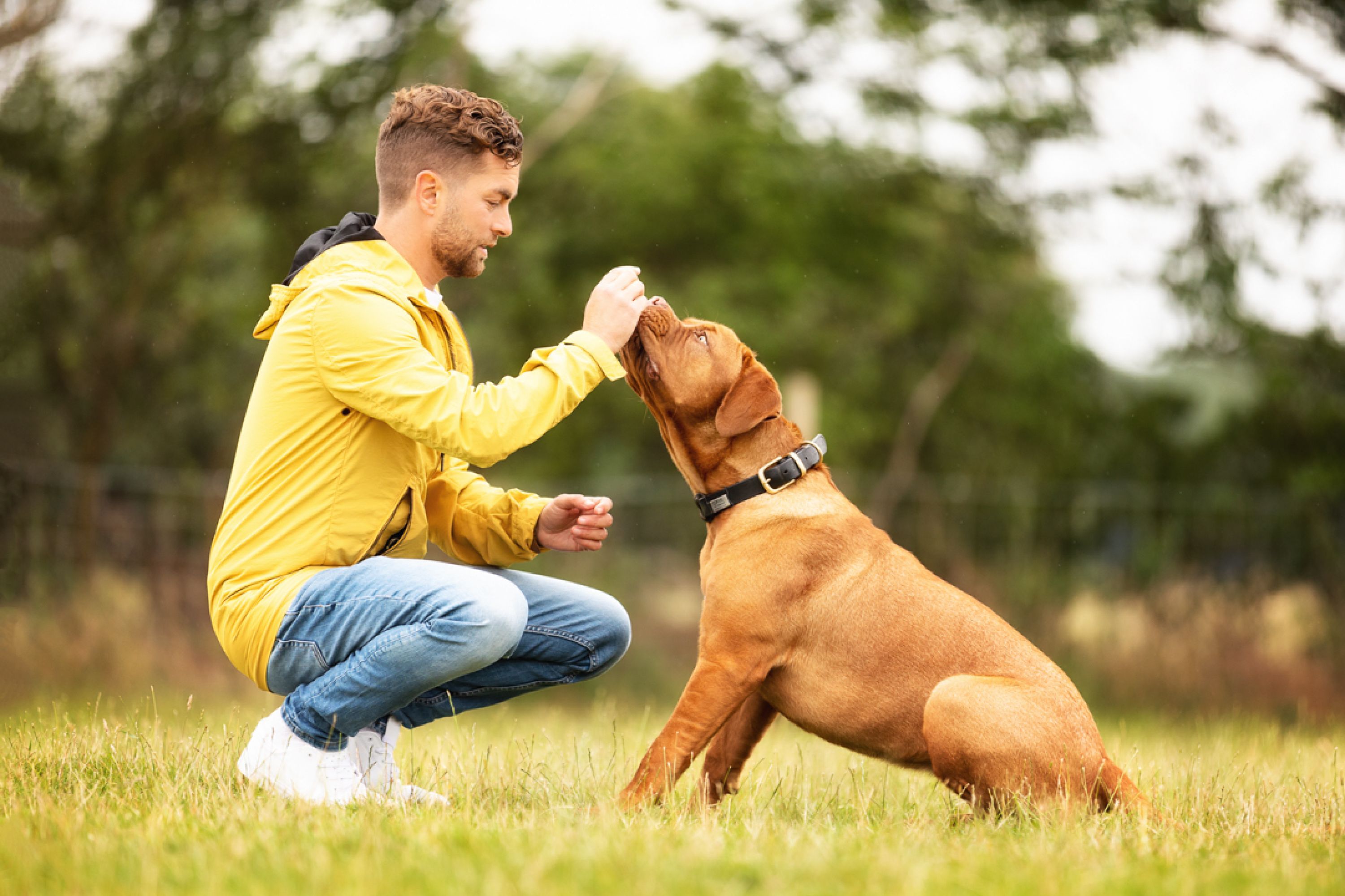
Consider your dog’s life stage
The saying 'you can't teach an old dog new tricks' isn't exactly true, but you should set realistic goals for the age of your dog. Tailor your training to your individual dog, their age, and where they are currently at.
For example, a puppy will need lots of time to explore, may become easily distracted by anything new, and may have a short attention span for training. On the opposite end of the spectrum, an elderly dog may simply not be as agile when it comes to assuming certain positions and may even become hard of hearing. Adapt your training sessions to suit them!
Don’t be afraid to change tack
If something isn’t working for your dog, consider how you can achieve the same result in a different way. The aim is to have fun whilst training your dog and, if things aren’t working, don’t be afraid to go back a step. A reputable trainer or training centre can help you out if needed.
So, there you have it. My dog training tips for beginners and more experienced dog owners alike. I hope you found them useful!
Dogtor™ Adem
